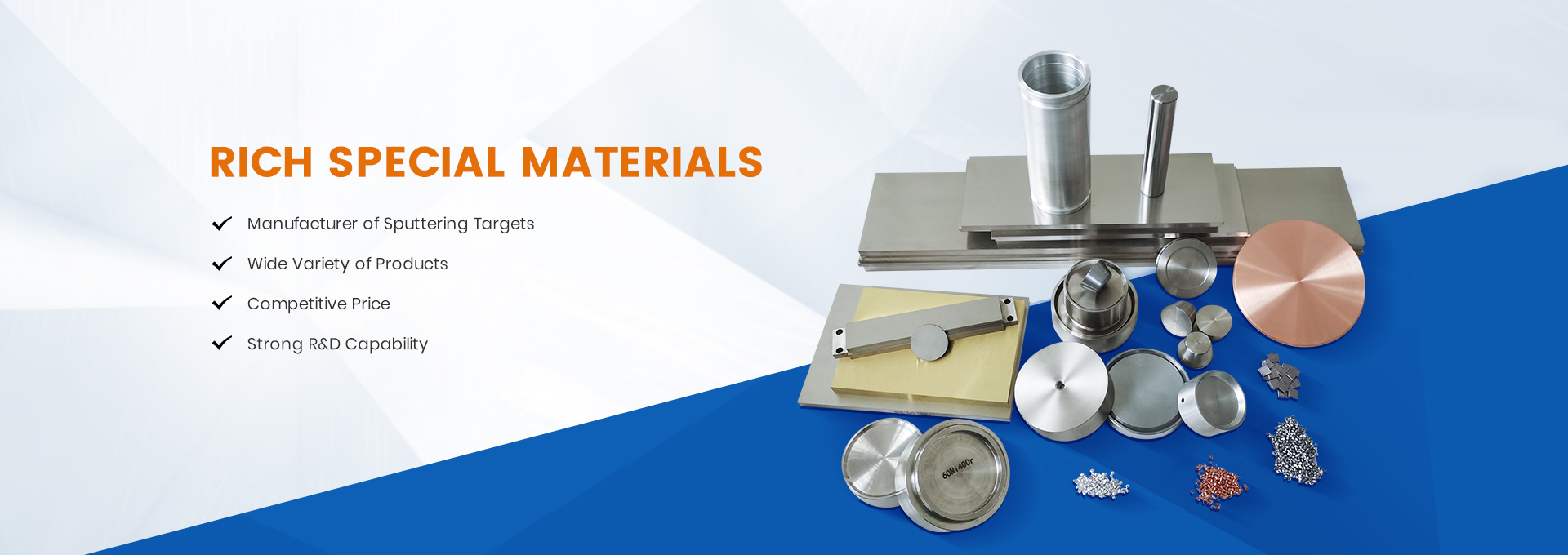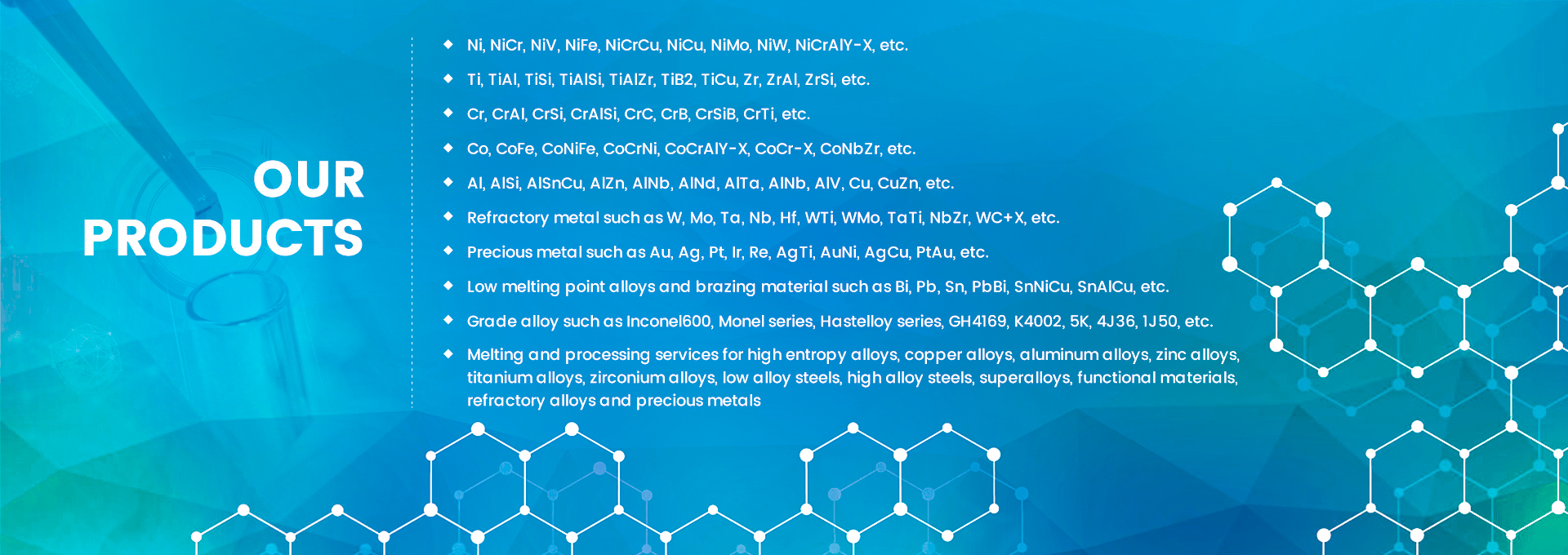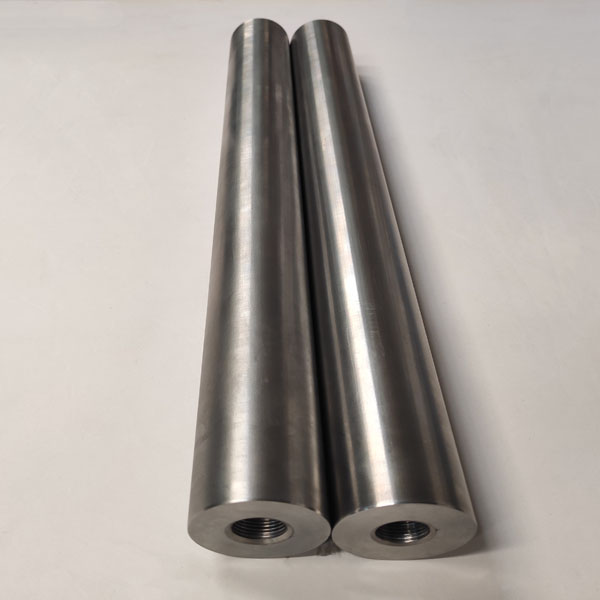Elastic alloy is a kind of alloy material with special elastic properties. When subjected to external forces, it can produce large elastic deformations and quickly return to its original state after the removal of the external forces. The amount of deformation has a linear relationship with the applied external force. Its performance indicators such as elastic modulus and elastic limit are relatively excellent, and it also has good mechanical properties, corrosion resistance and fatigue resistance.
Elastic alloys can be classified into high-elastic alloys and constant-elastic alloys. High-elastic alloys mainly include nickel-based high-elastic alloys and cobalt-based high-elastic alloys.copper base high elastic alloy. Constant-elastic alloys are divided into iron-nickel-based constant-elastic alloys and nickel-titanium-based constant elastic alloys (shape memory alloys).
Next, we will introduce high elastic alloys and constant elastic alloys respectively.
1.Classification of high elastic alloys
Nickel base high elastic alloy:
Ni – Cr – Ti – Al Alloy (3J1 Alloy) (ASTMA286): Chromium (Cr) is contained to enhance the corrosion resistance of the alloy, and titanium (Ti) and aluminum (Al) can strengthen the alloy matrix. This alloy has a relatively high elastic limit and fatigue strength and is, to a certain extent, antimagnetic. It is mainly used to manufacture elastic components that work in a weak – magnetic – field environment, such as the tension wires and suspension wires in electrical – measuring instruments, ensuring high – precision measurement of the instruments.
Ni – Cr – Mo – W – Fe Alloy (3J21 Alloy) (ASTMNAS604PH): The molybdenum (Mo), tungsten (W), and iron (Fe) in its composition further improve the strength and elasticity of the alloy. This alloy has a high elastic modulus, a high elastic limit, and good corrosion resistance. It is commonly used for instrument springs and relay springs in the aerospace field and is also used to manufacture some elastically – sensitive components that bear high stress.
Cobalt-based high elastic alloy:
Co – Ni – Cr – Mo – W Alloy (3J22 Alloy) (ASTMDiafex): Based on cobalt (Co), elements such as nickel (Ni), chromium (Cr), molybdenum (Mo) and tungsten (W) are added. It is characterized by an extremely high elastic limit and strength, and can still maintain excellent elastic properties especially in high – temperature environments. It is suitable for manufacturing elastic components that work under high – temperature and harsh conditions, such as high – temperature elastic parts in aero – engines and elastic connectors of gas turbines.
Co – Ni – Fe – Ti – Zr Alloy: By adding elements such as titanium (Ti) and zirconium (Zr), the high – temperature performance and elasticity of the alloy are further improved. This alloy has good anti – relaxation performance at high temperatures and can be used to manufacture elastic components that bear high stress and require dimensional stability at high temperatures, such as springs and elastic gaskets in high – temperature environments.
Copper based high elastic alloys: Such as Cu – Be series alloys (such as Cu – 2Be alloy), have a high elastic limit and corrosion resistance, are non – magnetic, have high electrical conductivity, excellent workability, can be forged and welded, do not produce sparks when impacted, and have better elastic properties after quenching and aging treatment. They are used for current – carrying elastic components and elastic components of precision instruments.
Classification of constant elastic alloys:
Iron nickel constant elastic alloy:
3J53 Alloy: (Ni42CrTi) (ASTMNi-Spand) mainly consists of iron (Fe) and nickel (Ni), and also contains a small amount of elements such as chromium (Cr) and titanium (Ti). Its elastic modulus remains almost unchanged within a wide temperature range, which makes it widely used in precision instruments that are sensitive to temperature. For example, it is used to manufacture high-precision watch hairsprings to ensure the accuracy of watch timekeeping in different temperature environments. It is also used for the elastic components of seismographs to ensure the accuracy of earthquake signal detection.
3J58 Alloy (Ni43CrTi) (ASTMNi-Spand C-902): With the adjustment of its composition based on the 3J53 Alloy, it has more excellent constant-elastic properties and a lower temperature coefficient. It is commonly used to manufacture high-precision electronic components such as resonators and filters, and plays an important role in communication equipment and electronic instruments, being able to ensure the accuracy and stability of signal processing.
Nickel Titanium based constant elastic alloys (Shape Memory Alloys)
Common Ni – Ti Alloy (Near – Equiatomic Ratio): It is composed of nickel (Ni) and titanium (Ti) in a nearly equal atomic ratio. This alloy has typical shape – memory effect and super – elasticity. It is widely used in the field of medical devices, such as vascular stents and pacemaker leads. The stent can be compressed and loaded into a catheter at a low temperature, and then it can recover its shape and expand the blood vessel under the effect of body temperature.
Ni – Ti – Cu Alloy: The copper (Cu) element is added to adjust the phase – transition temperature and performance of the alloy. Compared with the common Ni – Ti alloy, its shape – memory performance and processing performance are optimized. It can be used to manufacture some precision instruments that require the shape – memory effect to be triggered within a specific temperature range, such as temperature sensors and automatic – control valves.
Elastic alloys are widely used. In the aerospace field, they are applied to engine components and landing gear systems to withstand extreme working conditions. In the electronics and electrical appliances industry, they ensure reliable connections and help sensors operate. In the automotive industry, they optimize suspension and transmission systems. In the field of precision instruments and meters, they improve measurement accuracy and so on.
Post time: Jan-10-2025






